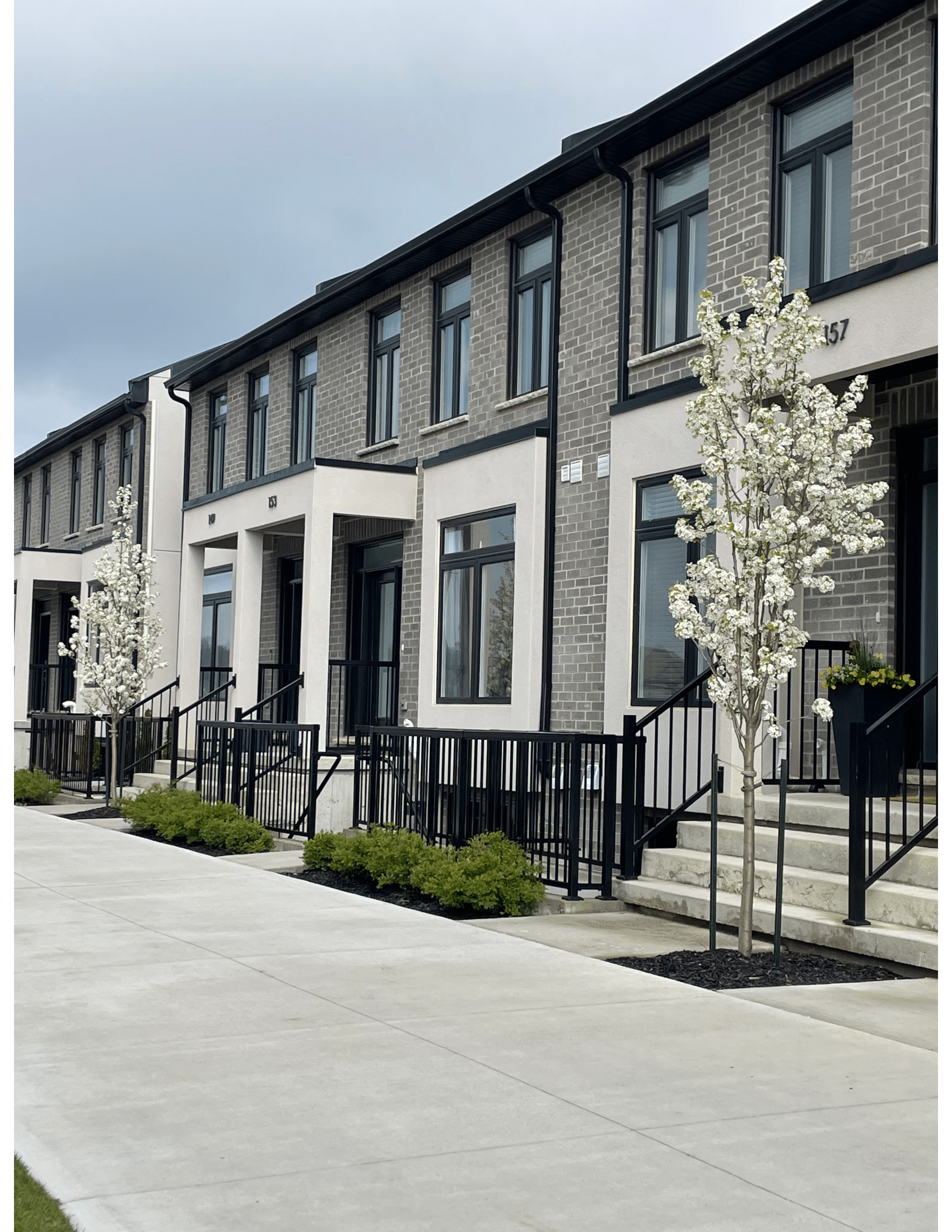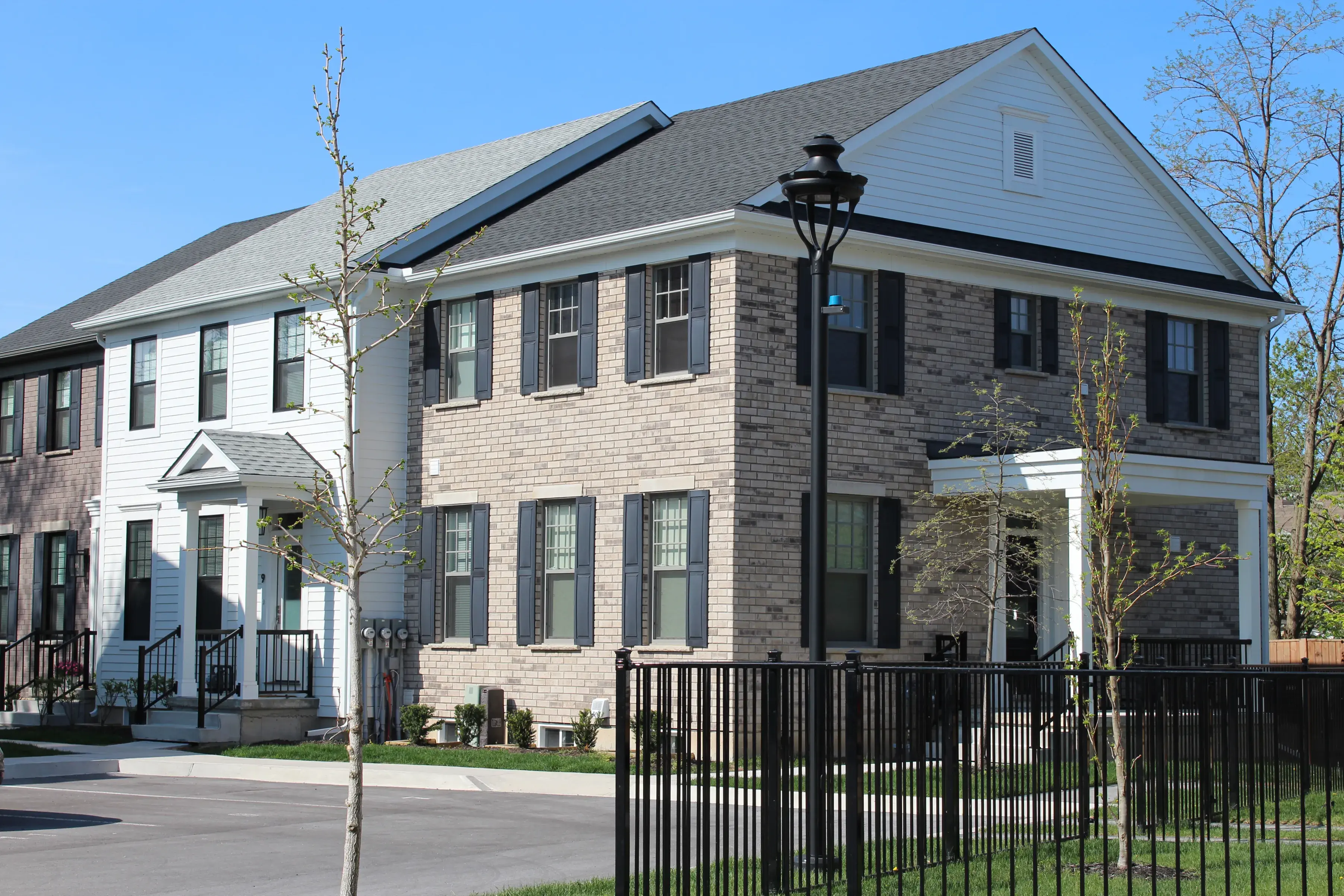Infill Housing as a Viable Approach to Meeting Housing Demand

Canada’s housing crisis is a major issue affecting many parts of the province, and Niagara is no exception. With a growing population and limited land, it’s been tough to find affordable homes, especially for first-time buyers. But there’s hope coming our way. Infill housing solutions might be the answer, or at the very least, a big part of the solution. In this blog, we’ll look at how urban infill development can address the housing shortage by making the most of existing land, increasing the number of homes available, offering diverse housing options and promoting higher density developments. Keep reading to learn how this approach can benefit the Niagara Region and, most importantly, you as a homebuyer.
The Housing Crisis - Why is There a Lack of Affordable Housing in Niagara?
Anyone who has followed the real estate market in recent years knows it’s been a rough ride. Starting in the 2020s, Ontario faced a growing housing crisis that affected major cities, small towns and entire regions like Niagara, causing home prices to soar. This dilemma isn’t caused by just one issue but is the result of several interrelated factors:
Surge in Population
In 2022, Ontario’s population grew by 445,495 people, the highest increase in a single year. However, only 71,838 new homes were built that year. This mismatch means there are far more people looking for homes than houses available, which drives up prices. As more people discover what Niagara has to offer, the demand for housing will keep rising, putting even more strain on the market. As a result, the Canada Mortgage and Housing Corporation (CMHC) estimates that 1.85 million homes must be built across the province by 2030 to restore housing affordability
The Source of the Demand is Increasingly Investors
At first glance, the lack of affordable housing in Niagara seems like a supply issue. Simply building more homes should solve the problem. However, it’s not that straightforward. A big part of the problem is who is making up the demand. More and more, housing is being seen as an investment rather than a basic need. Wealthy property owners and investors frequently outbid first- time buyers, making it hard for them to find affordable homes. The Bank of Canada found that investors were responsible for 30 percent of home purchases in the first three months of 2023, up from 28 percent in the same period in 2022 and 22 percent in 2020. The same report also found that the percentage of first-time homebuyers dropped to 43 percent in the first quarter of 2023 from 48 percent in the same period in 2020.
Lack of Affordable Housing Initiatives
The lack of affordable housing in cities is a major part of the problem. Developers often focus on building high-end homes because of their potential to bring in more money, while affordable housing projects are overlooked. This shortage of affordable and stable rental options has made life more difficult for lower-income Canadians. Since the 1970s and 80s, the construction of purpose-built apartments has predominantly been at a standstill. Instead, condominium investors have become the main source of new rental supply, adding over 200,00 new rental units to Canada’s large cities in the past 15 years. However, these units tend to be more expensive and less stable, leaving a gap in affordable housing. In the Niagara Region,community housing units demonstrate long wait times, forcing many to stay in rentals and struggle to find a permanent, affordable home.
Limited Available Land and Zoning & Regulations
Niagara has limited land available for new housing and much of it is either already developed or protected. This lack of space in urban areas forces many people to move to more remote locations far from the city. As a result, they end up with longer commutes and higher transportation emissions. This trend also impacts productivity, as businesses experience reduced efficiency. Additionally, local zoning laws and regulations can either prohibit or delay affordable housing projects. Strict rules can slow down development and limit the number of new homes that can be built, worsening the imbalance between supply and demand.
High Building Costs
During the pandemic, disruptions in the supply chain caused building material prices to skyrocket. Consequently, these higher costs are passed on to buyers, making new homes more expensive. On top of that, inflation, high interest rates and labour shortages have further amplified project costs and added uncertainty to the construction industry. High interest rates, in particular, make new construction projects less affordable. Although interest rates are starting to drop, RBC forecasts a modest decrease of about 75 basis points by early 2025. Despite this, finding affordable housing will remain a big challenge unless further action is taken.
Gaps in Income
Wages haven’t kept up with rising house prices, leaving many homebuyers struggling to afford increasingly expensive homes. For example, in January 2005, the average home in Canada sold for $241,000. By February 2022, this price had more than tripled, reaching $719,400 by February 2024. Meanwhile, earnings have not increased as quicky, so owning an average home now takes up more than 60 percent of a typical household’s income, according to a RBC report. This issue also affects the rental market. The rental vacancy rate dropped to a historic low of 1.5 percent in 2023 and rent prices have surged. Renters paid approximately $100 more per month last year, nearly four times the average annual increase from the decade before the pandemic. If this trend continues, many renters will struggle to afford housing in the future.
How do we Meet the Demand for Housing?
Solving the housing crisis is no easy task. It will largely depend on the region’s ability to drastically expand its inventory of housing. The province estimates that by 2051, Niagara will need about 298,600 new housing units. This is 96,400 units more than its current supply of 201,600. While building new subdivisions and condominiums might seem like the obvious solution, a better approach is to make use of underutilized areas in urban spaces. These areas, known as infill developments, offer great potential for mixed housing units that can meet different needs and budgets. In the next section, we’ll explore how urban infill developments are a viable approach to meeting the housing demand in Niagara.
What is Infill Housing?
Infill developments revitalize or increase vacant or underutilized land within already developed areas. This can include everything from building a new home on an empty lot and adding secondary suites to replacing a single- detached home with a duplex or fourplex to subdividing an existing lot to allow for additional units. Infill developments are known to have a variety of houses, including duplexes, semi-detached and detached houses, row houses, apartments and other residential and mixed-use buildings. Urban infill developments have been around for a long time, a clear demonstration of their benefit. They increase rental and home ownership options in neighbourhoods, make efficient use of existing municipal infrastructure and maintain the scale and character of a neighbourhood through policies and bylaws. Building infill developments requires special infill zoning. Infill zoning allows for multiple homes to be built on single lots. For example, many cities have vacant areas previously zoned for industrial use that now occupy prime real estate, ripe for redevelopment but are hindered by outdated zoning laws. Similarly, many purpose-built apartments are on sites where more buildings can be added once given the green light with the appropriate infill zoning. According to FRPO and Urbanation’s 2019 rental market study of Ontario, intensifying existing purpose-built apartments could add about 176,000 new rental units.
How Infill Housing Helps Meet the Growing Need for More Homes
Integrate New Housing Into Established Neighbourhoods
Instead of expanding outward, infill development focuses on utilizing vacant lots within existing neighbourhoods. Over time, some areas become run- down and lose their appeal, making them less desirable to live in. Infill developments breathe new life into these areas, improving their look and reputation. By focusing on revitalizing neighbourhoods and investing back into the community, successful infill projects can make a sustained difference.
Utilizing Existing Municipal Infrastructure
Unlike new developments, infill projects use existing municipal infrastructure. By tapping into pre-existing electricity, water, sewage systems, roads and internet, builders can cut down on costs. Since they don’t have to wait for new systems to be installed and fewer people are required on-site, the overall cost of building is substantially lower.
Increase Housing Supply
Infill developments make the most of available land by allowing multiple homes on a single lot. This approach helps increase the housing supply, tackle the affordability crisis and create more sustainable, low-carbon cities. Unlike suburban developments that often exclude low-income households and push people further from jobs and resources, infill projects offer diverse and affordable housing options right in the heart of the city. By adding various housing types to Niagara, we can better meet different lifestyles and begin to address the housing crisis. Mixed-use developments can enhance communities by providing housing options that fit various styles, functions and needs. Current zoning laws often limit housing choices and separate people based on income. However, with more flexible infill zoning and diverse housing options, we can challenge these restrictive practices.
Allow Opportunities for In-Law Suites and Rental Income
Infill housing provides more rental and homeownership options while making efficient use of existing infrastructure. Homeowners can rent out the upper or lower level of their infill home to help cover their mortgage payments. This extra income makes homeownership more affordable. Alternatively, homeowners might choose to keep the extra space for family, like an in-law or a parent, giving them their own private suite.
Reduce Sprawl
Infill developments help create walkable and bikeable neighbourhoods, which cuts down on urban sprawl and protects natural ecosystems. These projects can revive neighbourhoods, raise property values and even preserve historic buildings. By placing homes close to local amenities like grocery stores, schools and workplaces, infill development lowers the cost of living and reduces the need for cars. Cities like Victoria and Edmonton have already seen the benefits of urban infill development. For example, Victoria’s zoning laws allow up to six homes on a single lot, and Edmonton has recently updated its zoning regulations to encourage more infill housing.
How Elevate Living Combats The Lack of Affordable Housing
To confront the shortage of affordable housing in Niagara, we focus on enhancing lifestyles through creative home ownership options and following the New Urbanist Development philosophy. We treat each project with the same care we would give our own home and aim to build better communities. Our homes are designed to meet the needs of the region, both now and in the future. Known for our innovative infill housing solutions, our portfolio includes townhomes with accessory units, multi-unit buildings and single-family homes. Regardless of the type of infill housing solution we build, we are dedicated to meeting the needs of all of our clients and going beyond their expectations.
Learn More About Our Infill Housing Solutions
Solving the housing crisis won’t be quick or easy. The problems in the real estate market are deeply rooted and need more than one solution. Our infill housing solutions are a crucial part of the effort, helping to create more affordable and sustainable communities where people from all walks of life can thrive. Connect with us today to learn how our urban infill developments can make a positive impact.


